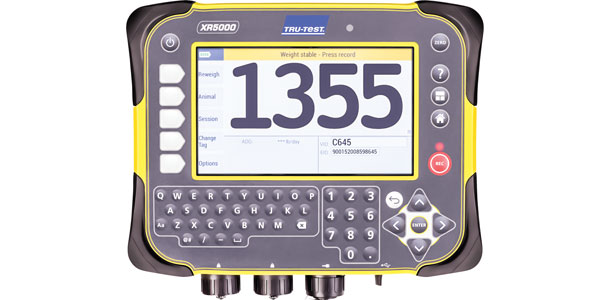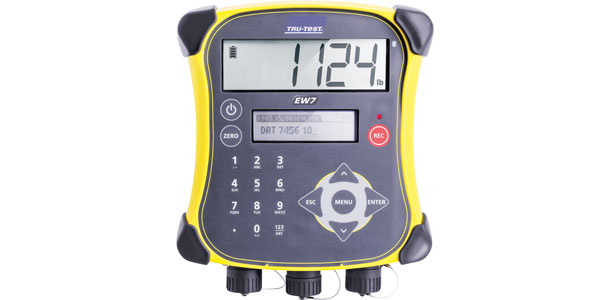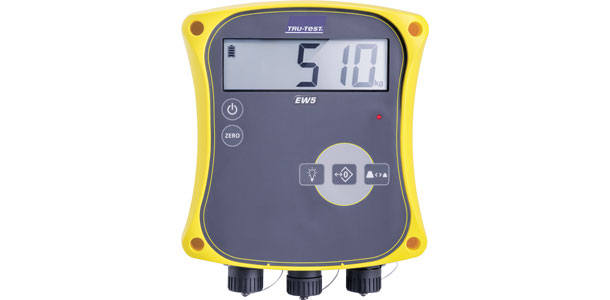Selecting the right scale will help producers improve their bottom line.
In the scale industry, there are usually three parts to the scale: load bars, the platform and the indicator.
Scales can be temporary, or portable, or they can be permanent. “When looking at a scale system, the first question is what kind of scale installation they will be using, and that will help producers decide what to purchase,” says Terrell Miller, founder of CattleSoft Inc., which produces cattle software for record-keeping.
Permanent scales are usually installed under a squeeze chute and require the load bars and the indicator. The load bars are bolted into brackets in concrete.
“The advantage to permanent installation is you set it and forget it. You can leave it there for years and not have to worry about the ground settling or moving it around,” says Miller.
A portable setup, however, offers more variety. “With the portable installation, you can install it in an alley before a headgate or a chute, or wherever you need it. Instead of weighing under a chute, it’s a moving platform.
It still has load bars, but you have an aluminum platform that is the width of the alley. If it’s too wide, it won’t be level, and if it’s too narrow, the cattle will step around it,” he says.
The majority of the scales they sell are portable and are sometimes a little cheaper than the permanent setup. Cost is not the only factor, though.
“It’s really more about finding the right fit. When we are talking about a scale, it’s more about the right solution than $100 here or there. We tend to see these smaller producers who don’t have a squeeze chute or who have multiple locations using the portable scales,” Miller explains.
Once a type of scale is chosen, the next step is to determine the level of technology a producer wants to use in the scale. Scales come in the most basic (which just read a weight) to the most advanced (which record a custom set of data for producers).

Pricing indicators
The biggest cost difference on these scales is the indicator, which can have a several thousand-dollar difference depending on the technology.
“In the higher-end scales, the indicator alone is $3,000 or more. They are set up where they can be configured with custom fields to collect breed, birth date, pregnancy status, health updates, etc., and this information is sent to spreadsheets or a database,” he says.
The middle-range scales will read an RFID tag and pair the weight of the animal with the animal’s tag number, recording the data wirelessly. “The advantage to the middle-of-the-road and higher-end scales is that they increase efficiency. When you are typing in the animal tag number, that means you do not have to have someone standing beside you with clean hands writing it down,” Miller explains.
“Collecting the data at the chute helps with labor efficiency. If the cattle have RFID tags, it speeds up even more. A producer can scan the tag, and the EID number is sent wirelessly to the indicator, and you are ready to save it right there.”

Efficiencies with RFID
Producers who are using the RFID system in their cattle generally do so for two reasons. “The first reason is for compliance. If they are in a state or a program that requires EID compliance, producers may already be using it and can incorporate those tags into the scale,” he states.
He continues, “The other category will be larger herds, with a couple hundred head and larger, to increase efficiency. RFID tags add about $2.50 per head, and that is a variable cost per animal. With the smaller producers, it’s not the price of the tag, but the $1,200 to $1,400 cost for the reader – the fixed cost – and that gets expensive.”
For many producers, the middle-of-the-road indicator that utilizes RFID technology is a good fit, especially when used in conjunction with data software such as CattleMax.
“Collecting is the easy part, but analyzing and reviewing the information is where the value is. For example, if a producer collects weaning weight, he can import into CattleMax and have seven other performance values calculated such as average daily gain, 205-day weight and weight per day of age,” Miller explains.
That data can also be used in a group setting. “When you wean a group of calves, that can be set up as a temporary group. You can also calculate efficiencies in cow production by figuring how much the cow and calf weighed at weaning, and get the percent dam weight.”

Smaller producers may want to go with the lower-end scale and enter the weight manually.
“The key thing I always like to ask folks is: ‘What are you going to do with the weight after you have it?’ If they don’t know, they need to reconsider some of their goals; otherwise, they end up buying a piece of equipment that is an electronic file cabinet,” Miller says.
He adds, “In the beef cattle business, we are selling by the pound, or we are selling to customers who are selling by the pound if we are in the seedstock business.”
Mobile alternatives
Another option for a portable system is a trailer that is towed behind a vehicle and can weigh multiple animals at once. “The mobile group scale can be moved from site to site, acting as a double-axle trailer,” says Mark Murdza, sale and business development manager for Southwestern Scale in Arizona.
“The printer and the electronics are all integrated into one unit. When a producer does get it to the site, they unhook it off the vehicle, release the air pressure from the bladders, and the wheels recess up into the wheel well.”
Mobile scales are powered by batteries and are generally manufactured as group scales. “The people who are going to want this are going to weigh groups, but they can also weigh individuals. It will also be for those who want to have a more true reading of shrink,” says Murdza.
This profit is seen because producers can calculate actual shrink instead of relying on a formula or an agreed-upon number that may or may not be accurate.
Even though there are different models and different types of installation, using scales to gather weights is important to producers. “We continue to see a growth in producers who are buying scales. Several years ago, that was due to the drought, and producers had to better manage their animals.
It is so costly to keep an animal during the drought, so you had to be efficient and know who was working and who wasn’t. Some parts of the country have eased on the drought, and now they want to know what they are going for by the pound to make sure they are selling at the right time to capture the right prices,” says Miller.
He continues, “It’s important to manage your animals. It’s expensive to keep cows, and when you can manage and identify your poor, good and excellent producers, it helps manage profitability.” ![]()
Robyn Scherer is a freelance writer based in Colorado.
PHOTOS
PHOTO 1: A rancher uses a Tru-Test EID Reader in conjunction with a Tru-Test scale indicator to record the animal’s weight and electronic id number.
PHOTO 2: A high-end scale indicator, such as a Tru-Test XR5000, stores weights, as well as additional information including breed, health treatments, pregnancy information, and other custom data fields.
PHOTO 3: This scale indicator model displays weights, and also saves a weight history linked to the animal’s visual id or electronic id.
PHOTO 4: A basic indicator will only display the weight of the animal. Photos courtesy of Tru-Test Limited.








